With much of the world already at war, December 7, 1941 proved not only a day that would live in infamy but for most Americans, an event that would redefine their world. This impact was no more significant or immediate than for US citizens of Japanese ancestry and in particular second-generation Americans, or Nisei. Since 1937 the Japanese invasion of China and atrocities inflicted on civilian populations sickened most of the world, punctuated by the undeclared attack on Pearl Harbor. Unfairly stricken with the effects of these acts the Nisei refused to be victims of these events, but instead, set a course to undeniably prove both their competence and loyalty. Driven by this quest, the 100th Infantry Battalion performed with distinction and rose to become the most highly decorated unit for its size in US military history.
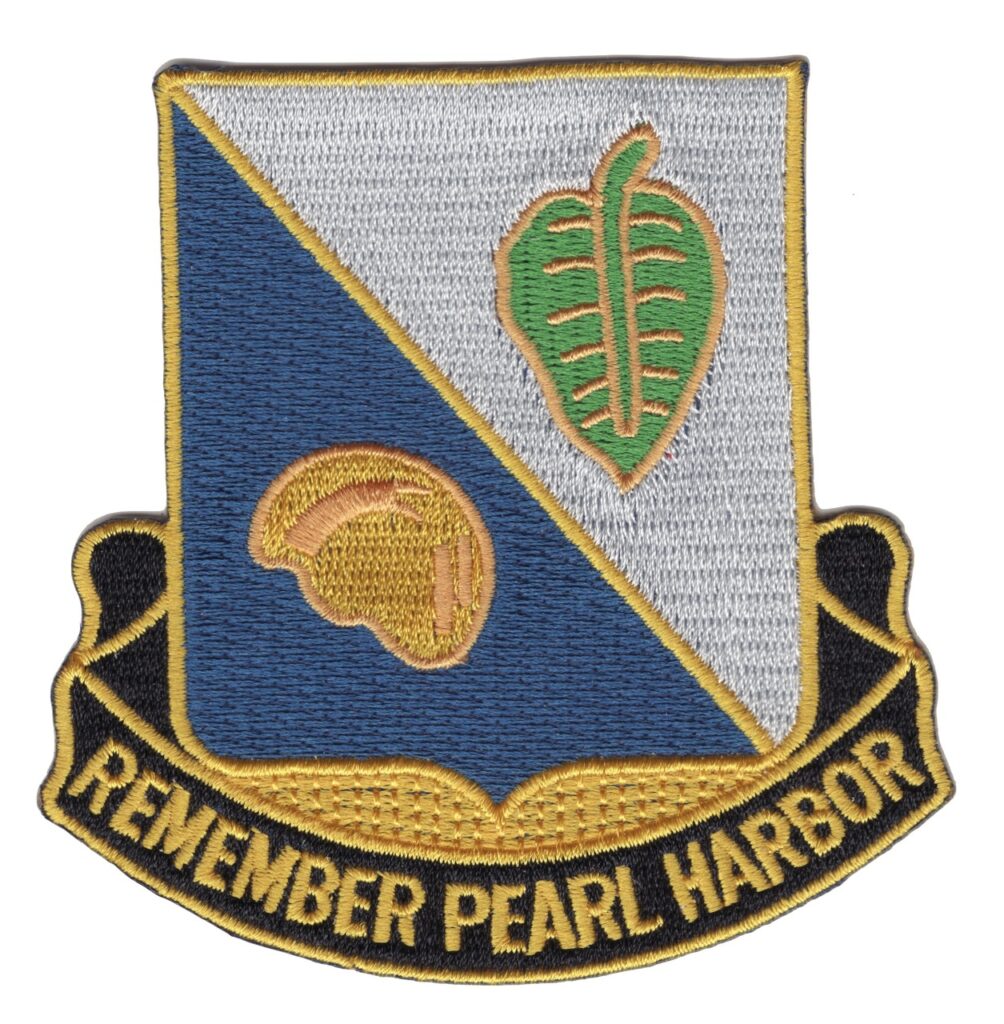
Remember Pearl Harbor
On December 7th, many Americans of Japanese Ancestry lived in Hawaii and served in the 298th and 299th Infantry Regiments. Following the Pearl Harbor attack these units were consumed by aiding the wounded, donating blood, and preparing defenses for the suspected invasion by Japanese forces. Boasting histories reaching back to 1893, these regiments were National Guard units prior to 1940, comprised largely of Hawaiians. However, the peacetime draft instituted in September 1940 netted more than two-thousand Nisei to become the largest military population in Hawaii. But, only three days after the attack racism combined with deep-seated fear of sabotage and invasion led to the disarmament of all Nisei soldiers, reclassification of draft age males to 4-C (Enemy Alien), and expulsion of ROTC candidates. It would not be until May 1942 that Washington agreed to a racially segregated successor unit formed with Nisei personnel from the 298th and 299th Regiments. In June 1942, this force of 1,432 officers and enlisted men was designated as the 100th Infantry Battalion following their arrival on the US mainland.

Typical of military practice at the time, the 100th Infantry Battalion shipped out in secret from Honolulu to Oakland, California aboard the transport SS Maui, and then transported to Camp McCoy, Wisconsin. While encamped, elements of the Battalion engaged in secret war dog experiments on Cat Island to identify and attack Japanese based on attributes such as scent and appearance but were ultimately deemed a failure.
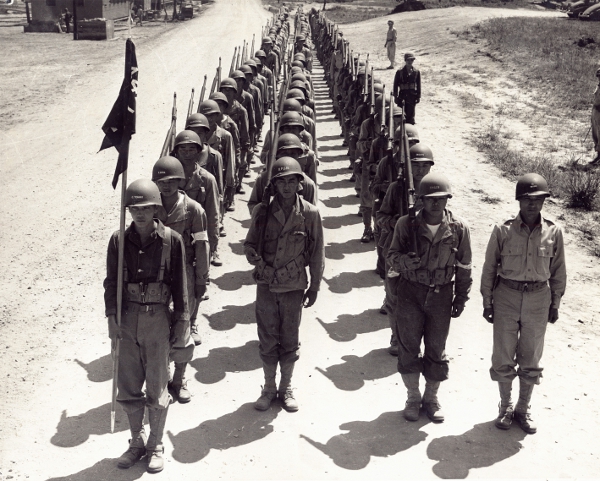
Further, sixty-seven soldiers were recruited to the Military Intelligence Service (MIS) as interpreters and interrogators, quickly deemed “America’s Secret Weapon”. Interestingly, aptitude and intelligence testing revealed a Battalion-wide average score of 103, seven points below qualification for Officer Candidate Training.
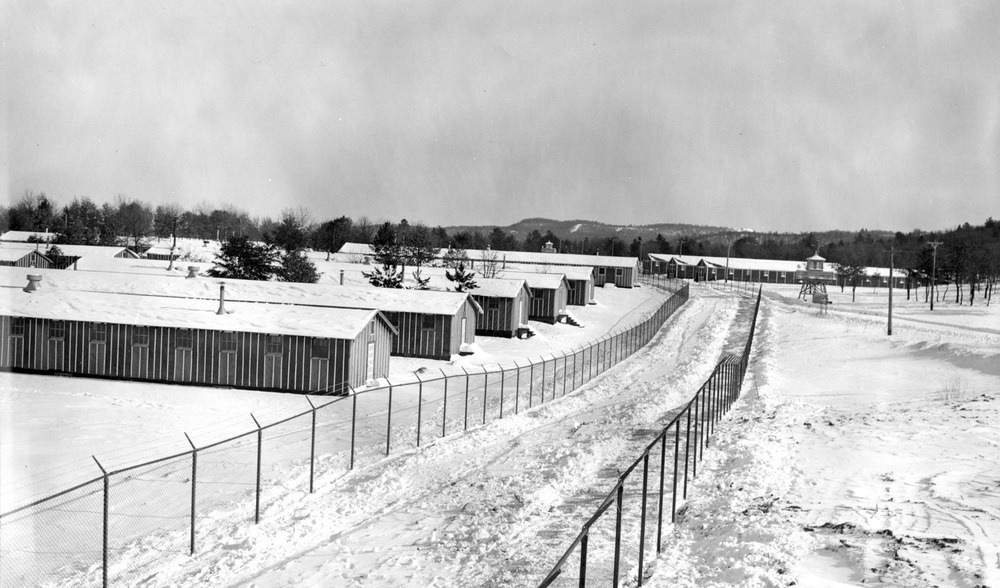
Thereafter the Battalion traveled to Camp Shelby, Mississippi for training in rifle squads, tactics, and leadership. Under the scrutiny of Major General Haislip, Chief of Army Ground Forces, the men earned his highest commendation in field exercises, advanced maneuvers, and field formations, followed by maneuvers at Camp Claiborne, Louisiana to complete a fourteen-month training regimen.
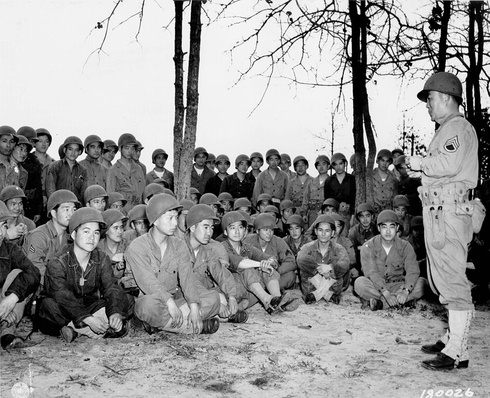
Returning to Camp Shelby in August 1943, it was then the Battalion learned of a second all volunteer Nisei unit, the 442nd Regimental Combat Team, activated in February 1943 as an outcome of the brilliant training performance by the 100th Infantry Battalion. Departing by train for Camp Kilmer, New Jersey, the Battalion boarded a converted banana boat, SS James Parker, for a twelve-day, uneventful Atlantic crossing.
The 100th Infantry Battalion Became is the Most Highly Decorated Unit in US Military History
Arriving at Oran, Algeria on September 2nd the 100th was immediately attached to the 34th “Red Bull” Division. Given the option of guard duty for railways and supply depots, the Battalion volunteered instead for a combat assignment, and so, the 100th entered the ETO twenty days later through the beaches of Salerno, Italy. With the surrender of Italy on September 8th and bolstered by the culture embedded in the 34th Division’s motto, “Attack, Attack, Attack”, the Battalion faced well-entrenched German defenders as the Allies fought their way up the Italian Peninsula.
The rocky terrain and freezing temperatures proved to be deadly obstacles together with minefields spread across the Italian countryside. On September 28th and 29th the Battalion incurred its first combat casualties while assaulting Montecorvino, and in only their second day of enemy action Sargent Shigeo Takata was posthumously awarded the Purple Heart and Distinguished Service Cross, sacrificing himself to reveal hidden enemy gun emplacements. The men then moved north to capture the town of Benevento, a crucial road and railway junction outside Naples. The capture of Benevento and growing combat reputation inspired a Letter of Commendation from General Mark Clark, after which the Battalion was permitted to wear the 34th arm patch, a practice continuing through war’s end despite changing attachments.
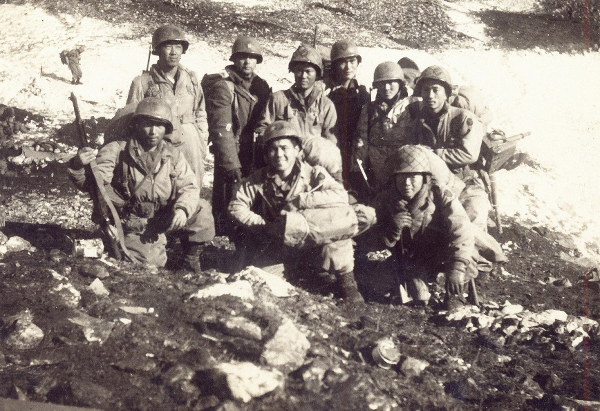
In October 1943, the 100th Battalion was ordered west, capturing several hills critical to assaulting the German’s Winter Line of Defense and La Croce, the last barrier to Monte Cassino. La Croce proved the fiercest fighting to-date and claimed half of the Battalion’s original force, after which the Battalion joined in four failed assaults on Monte Cassino, a mountain top Abbey and keystone in breaching the Gustav Line and advancing into Rome. Successfully crossing the Rapido River and pinning down German forces halfway up Castle Hill, the capture of the position would require devastating airstrikes and two successive assaults by five Allied divisions, claiming 1,051 Allied dead and reducing the 100th to only 521 soldiers fit for duty. Dubbed by war correspondents “The Purple Heart Battalion”, replacements were transferred from the 422nd Regimental Combat Team to bring the unit’s strength to 1,095.
In March 1944, the 100th Battalion was deployed to the Anzio beachhead, a stalemate created by an Allied amphibious landing and German counterattack. With little progress being made, Lt. Kim and Pfc Akahashi infiltrated enemy lines to capture Germans for interrogation, leading to Allied plans for a breakout and earning the Distinguished Service Cross. With fierce resistance during the breakout six more Nisei would earn the DSC and the Silver Star. Now on the road to Rome, the 100th and five heavy weapon units captured Hill 435 near Lanuvia, accomplished in one day despite earlier, failed attempts by two other battalions. Nonetheless, seven miles outside of Rome the 100th was halted to permit other troops to enter the city to a heroes’ welcome.

Now early June, the Battalion moved to Civitavecchia where the unit met up with the 442nd Regimental Combat Team, newly deployed to the ETO and attached to the 34th Division. Together these units then pushed north to outflank German defenders at Belvedere, capture the town and force the surrender of an enemy battalion, earning their first Presidential Unit Citation for bold tactics and a decisive victory over a far superior force. Leveraging this success, the units assaulted a series of critical hills and secured several towns in preparation for a large offensive against the German’s Gothic Line, but other priorities would intervene.
In September 1944, the 100th/442nd were pulled out of Italy and shipped from Naples to Marseilles, France. Now attached to the 36th Division of 7th Army the plan was to capture key passes in the Vosges Mountains, where the enemy had been strengthening defensive positions, then cross the Rhine River into Germany. Upon arrival the 100th/442nd assaulted Bruyeres and the surrounding hills. After two weeks of combat the men captured Bruyeres, and in a highly controversial move, were immediately ordered to take a nearby town of no reported value, Biffontaine. Following twenty-four hours of intense combat the town was captured but rendered heavy casualties, depleted food, ammunition, medical supplies, and water. Yet, there would be no rest. General Dahlquist, Commander/36th Infantry Division, had ordered 1st Battalion of the 141st Infantry to pursue retreating Germans deep into wooded territory with their flanks exposed and beyond the range of artillery support. Enemy forces rapidly encircled the 275 soldiers, now known as “The Lost Battalion”, and following two failed rescue attempts the 100th/442nd were sent in. After five days of horrific combat the 211 remaining men were rescued, but at the cost of 350 casualties to the 100th/442nd. For their actions in the Vosges Mountains the 100th earned a second Presidential Unit Citation and in March 1945 were ordered back to Italy as part of the 92nd Division.
While the 100th/442nd were fighting in the Rhineland, 5th Army was unable to break the Gothic Line in five months of combat. Nonetheless, keying on deep, nighttime infiltration of enemy lines the 100th/442nd unleashed an assault. With the 442nd on the flanks and 100th in frontal attack the dawn assault succeeded in breaking through the Gothic Line in thirty minutes, earning the unit’s third Presidential Unit Citation. Following the assault German troops were in widespread retreat through the Tuscany Region, centered on the town of Aulla. In what would prove a final assault, the 100th secured Mount Nebbioni and the town of Aulla on April 25th, 1945. On May 8th Germany surrendered.
Major Campaign: The 100th and 442nd Regimental Combat Team


The 100th Infantry Battalion performed brilliantly extending from training through twenty months of combat, often achieving outcomes that repeated attempts by much larger forces could not. In doing so, the 100th and 442nd Regimental Combat Team demonstrated uncommon heroism and personal sacrifice, forever erasing the burden to prove their loyalty and instead of serving as an example for others to follow. This commitment to purpose would compel many of these veterans to pursue careers in public service and in further tribute to the men of the 100th Infantry Battalion and 442nd Regimental Combat Team, on November 2, 2011 President Obama conferred the Congressional Gold Medal, “the highest expression of national appreciation for distinguished achievements and contributions”.
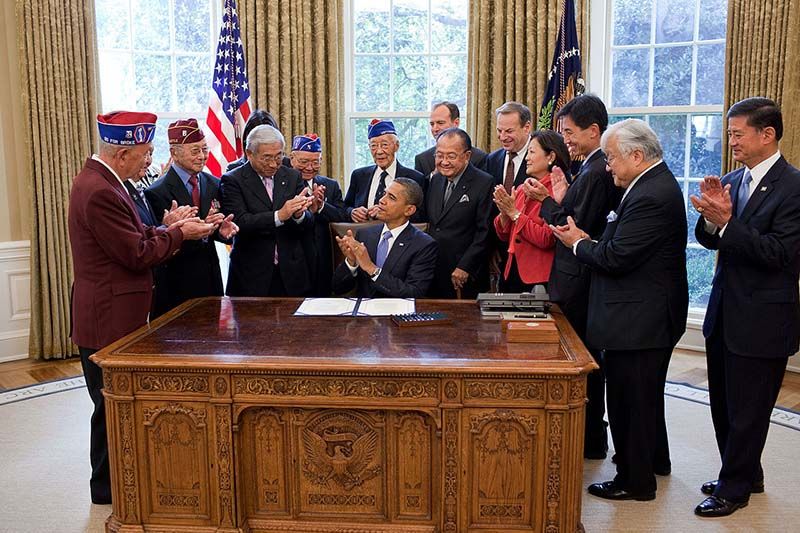
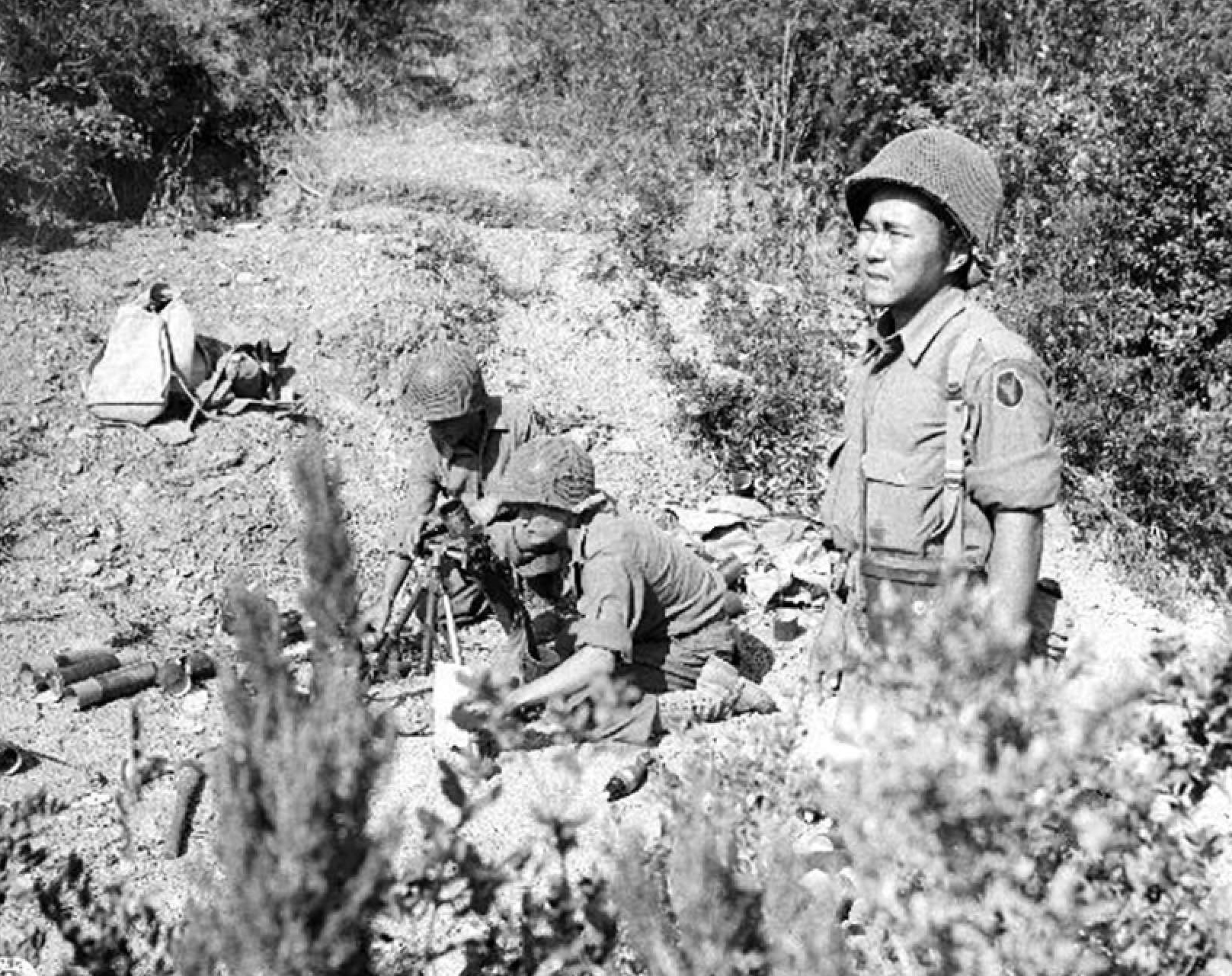
0 Comments